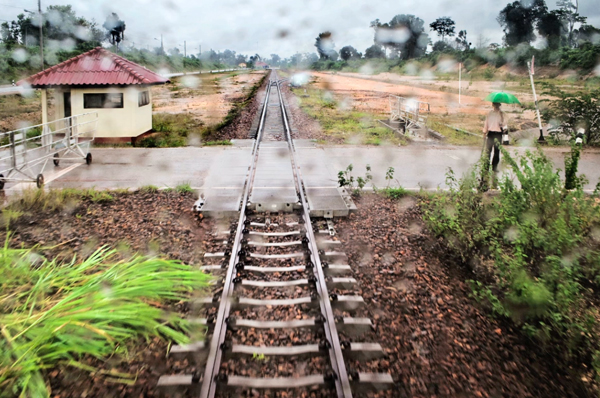VIENTIANE, Laos – Imagine a day when it is possible to take a train continuously from London to Singapore. The United Nations Economic and Social Commission for Asia and the Pacific (UNESCAP) hopes to realize that vision by constructing the Trans-Asian Railway Network (TAR).
Laos, the least developed country in East Asia, sees this rail project as a developmental key that would transform its landlocked situation and untap its abundant natural resources. At present, there are only 2 miles of rail track across Mekong River, connecting Laos to Thailand.
The new railway will consist of a web of 70,836-mile rail track, linking 28 countries across Asia and Europe. When completed, this network would greatly shorten distances and reduce transit times between countries and regions. For Laos, it means opening a direct link between China and Thailand.
According to Pierre Chartier, economics affairs officer for UNESCAP’s Transport Division, the network could also be a potential catalyst for trade expansion, economic growth and cultural exchanges at an international level.
Currently, 5,157 miles are still missing. For countries with absent links, embarking on multibillion-dollar rail construction has become a national agenda.
Where no train has ever run, the government aims to build a high-speed rail line across the country, linking it to neighboring China. The entire project is estimated to cost $13 billion and Laos is seeking funding and technical assistance from the Chinese government.
The Vientiane Times, Laos’ daily newspaper, reported that construction of this high-speed railway, originally scheduled to begin in April 2012, has been postponed as the Laos government is currently in negotiation with China. The article also revealed that China would be the main stakeholder, with a 70 percent share in this build-and-operate joint venture with Laos.
A complex process of changes– social, economic and ecological– will inevitably result. While possibly generating economic benefits, the railway project may lead to new groups of people falling below the poverty line.
“Where you have transport, you have a greater level of human activities and human interaction,” Chartier said. “Some of these activities and interaction may be negative, [such as] trafficking and an impact on the environment. You may have to displace some communities.”

Shamali Guttal, senior researcher for the development NGO Focus on the Global South, also highlighted that the railway will open up parts of Laos that are currently not connected to other areas. Guttal said this could lead to distress migration, increased illegal logging and accelerated natural resource depletion.
Rural villagers, who depend on the land for their livelihood, are likely to be most affected by the railway developments, having little to no control over the decision making.
In search of perspective, I traveled in Laos along the proposed rail route from the capital Vientiane to the northern border town of Boten.
What started out as a simple inquiry about the Trans-Asian Railway very quickly turned into a complex and fascinating experience. As I journeyed into Laos’ world of economists, sociologists and politicians, I found this continent-linking railway will bring nothing short of complicated change through its landlocked borders.

